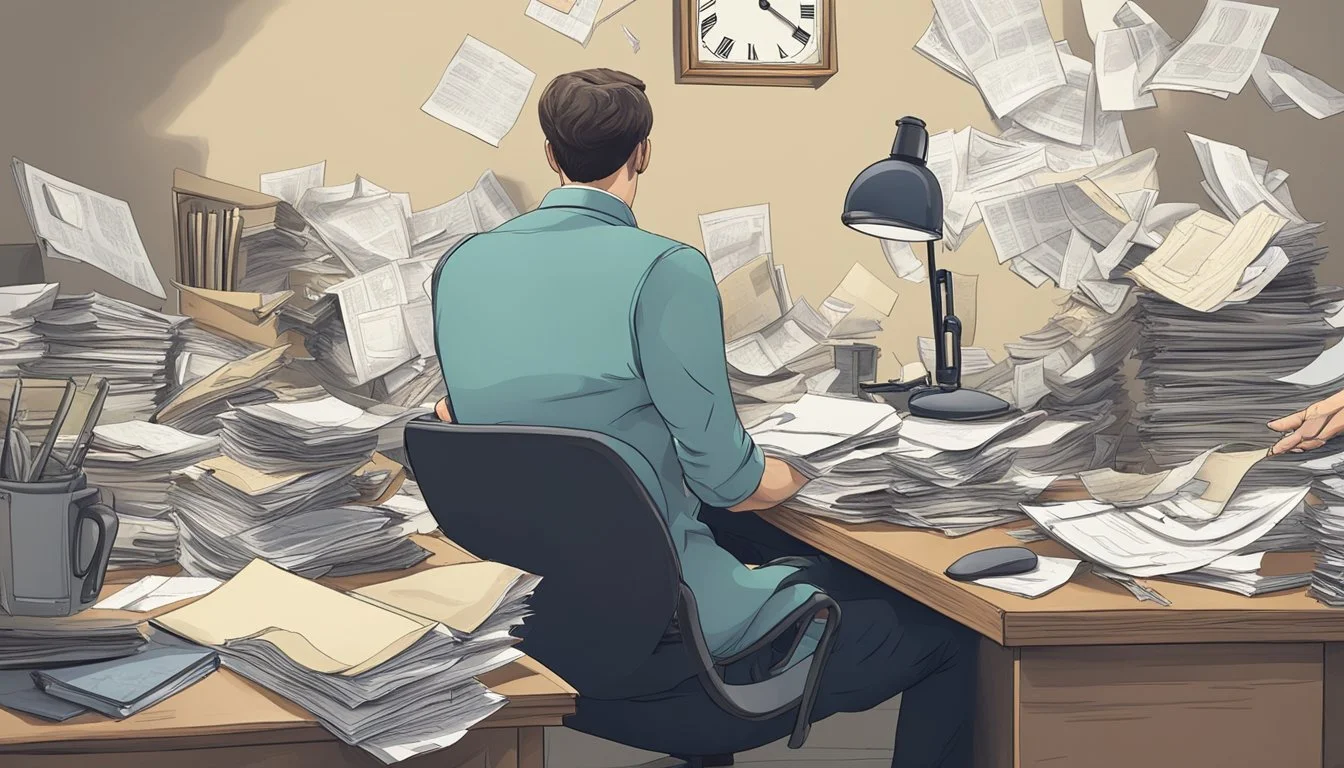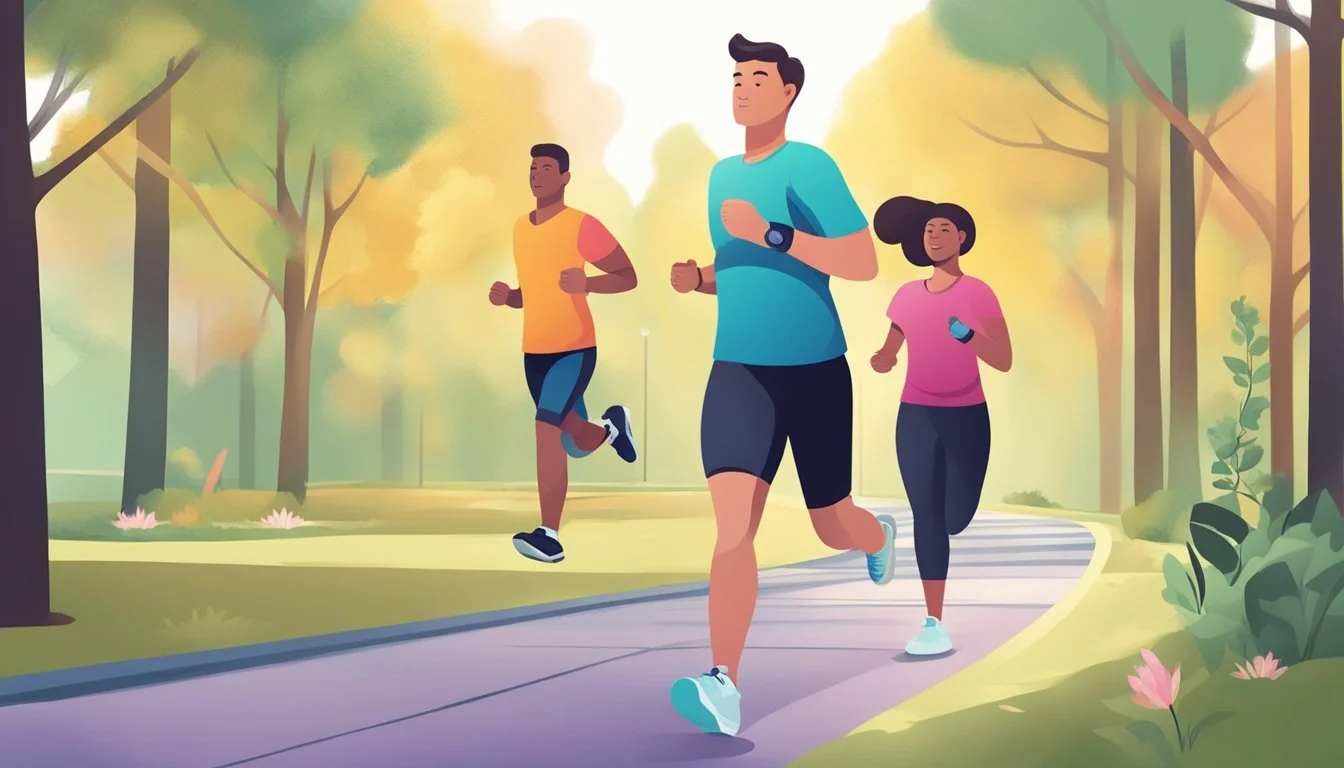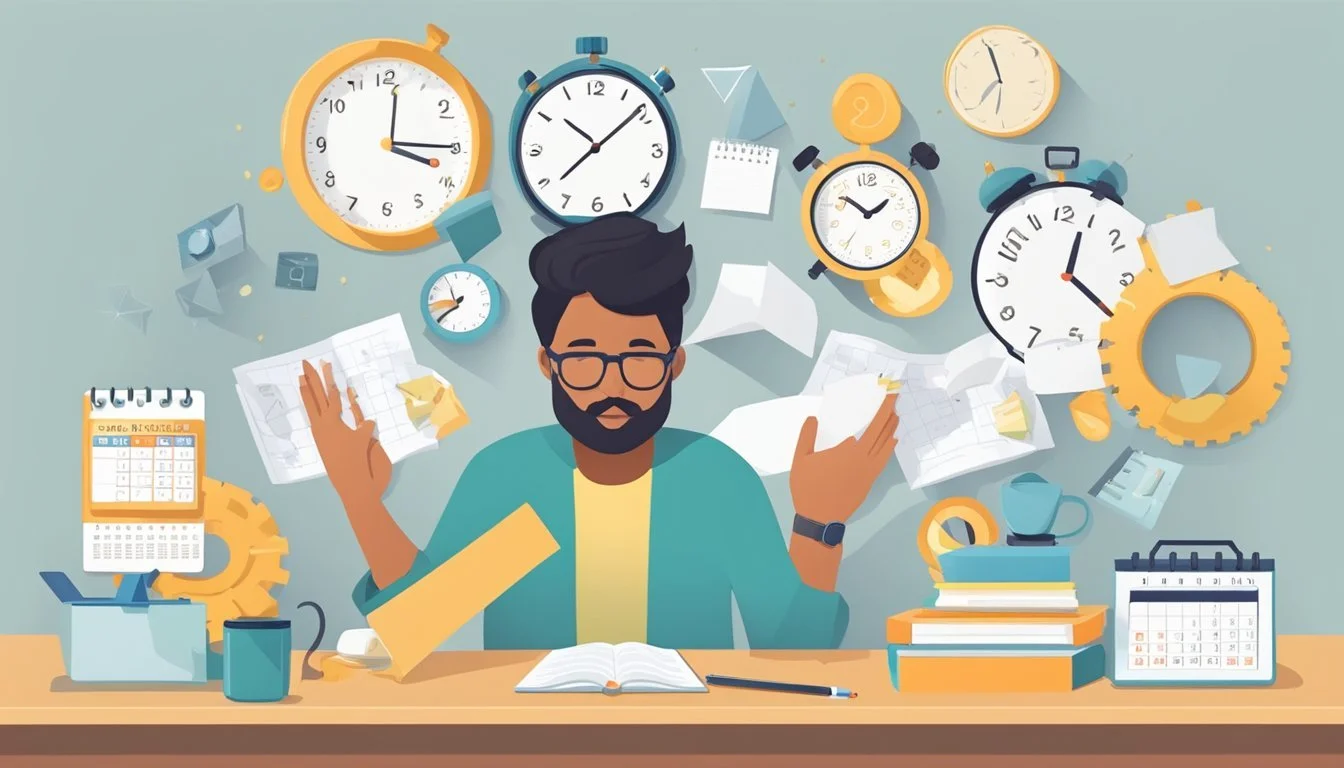7 Strategies for Managing ADHD-Related Anxiety
Expert Tips for Calm and Focus
Attention Deficit Hyperactivity Disorder (ADHD) and anxiety often coexist, creating unique challenges for individuals navigating both conditions. The interplay between ADHD symptoms and anxiety can amplify difficulties with focus, organization, and emotional regulation. Recognizing this connection is crucial for developing effective management strategies.
Implementing targeted coping mechanisms can significantly improve daily functioning and quality of life for those experiencing ADHD-related anxiety. This article explores seven practical strategies designed to address the specific needs of individuals dealing with both ADHD and anxiety. By incorporating these techniques into their routines, readers can gain valuable tools to better manage their symptoms and enhance their overall well-being.
1) Cognitive Behavioral Therapy (CBT)
Cognitive Behavioral Therapy (CBT) is a powerful tool for managing ADHD-related anxiety. This therapeutic approach helps individuals examine and restructure their thought patterns in more beneficial ways.
CBT enables people with ADHD to develop practical strategies for daily life. It focuses on establishing structured routines and improving time management skills, which can reduce anxiety and enhance overall functioning.
The therapy often incorporates the use of calendars, planners, or digital apps to track tasks and appointments. These tools help create a sense of order and control, alleviating anxiety stemming from disorganization.
CBT also addresses negative thought patterns that can exacerbate anxiety in individuals with ADHD. By challenging and reframing these thoughts, people can develop a more balanced perspective on their abilities and challenges.
Research supports the effectiveness of CBT for ADHD. Studies have shown that combining CBT with medication can be more effective in controlling ADHD symptoms than medication alone.
For both children and adults with ADHD, CBT can improve essential life skills. These include organization, problem-solving, and emotional regulation, all of which contribute to reduced anxiety and better overall functioning.
2) Mindfulness Meditation
Mindfulness meditation can be a powerful tool for managing ADHD-related anxiety. This practice involves focusing attention on the present moment without judgment.
For individuals with ADHD, mindfulness meditation can help reduce mind-wandering and improve emotional regulation. It allows them to observe thoughts and feelings without getting caught up in them.
Regular mindfulness practice may enhance focus and attention span in people with ADHD. It can also help decrease stress and anxiety levels, leading to a calmer state of mind.
One effective approach is to start with short meditation sessions, gradually increasing the duration over time. Even a few minutes of daily practice can yield benefits.
Guided meditations specifically designed for ADHD can be particularly helpful. These often incorporate techniques to address common ADHD challenges like restlessness or difficulty concentrating.
Mindfulness-based cognitive therapy (MBCT) combines meditation with cognitive techniques. This approach can be especially beneficial for those dealing with both ADHD and anxiety.
Consistency is key when incorporating mindfulness meditation into an ADHD management plan. Regular practice, even if brief, can lead to meaningful improvements in symptoms over time.
3) Exercise Regularly
Regular physical activity is a powerful tool for managing ADHD-related anxiety. Exercise has been shown to increase dopamine levels in the brain, which can help reduce symptoms of anxiety and depression.
Engaging in activities like swimming laps, running, or cycling can improve concentration and focus. These exercises can be done indoors or outdoors, with outdoor activities potentially offering additional benefits due to exposure to nature.
Physical activity also promotes better sleep, which is crucial for individuals with ADHD. Improved sleep patterns can contribute to better overall mood and reduced anxiety symptoms.
Incorporating exercise into daily routines doesn't have to be complicated. Even short bursts of activity, such as a brisk walk during lunch breaks, can have positive effects on ADHD symptoms and anxiety levels.
Consistency is key when using exercise to manage ADHD-related anxiety. Establishing a regular workout schedule helps create structure and routine, which can be beneficial for individuals with ADHD.
Exercise also serves as a natural stress reliever, helping to alleviate tension and worry. This can lead to improved emotional regulation and a greater sense of calm throughout the day.
4) Healthy Diet
A balanced diet plays a crucial role in managing ADHD-related anxiety. Consuming nutrient-rich foods can help stabilize mood and improve focus. Protein-rich foods like lean meats, eggs, and legumes support neurotransmitter production and maintain steady blood sugar levels.
Complex carbohydrates found in whole grains and vegetables provide sustained energy throughout the day. These foods can help prevent the energy crashes often associated with simple sugars and refined carbohydrates.
Omega-3 fatty acids, present in fish, flaxseeds, and walnuts, may have a positive impact on brain function and mood regulation. Including these in the diet could potentially alleviate some ADHD and anxiety symptoms.
Limiting caffeine and sugar intake can help reduce jitters and restlessness. These substances can exacerbate anxiety symptoms in some individuals with ADHD.
Staying hydrated is essential for optimal brain function. Drinking plenty of water throughout the day can help maintain focus and reduce irritability.
A diet rich in fruits and vegetables provides essential vitamins and minerals. These nutrients support overall brain health and may contribute to better emotional regulation.
5) Consistent Sleep Schedule
Maintaining a consistent sleep schedule is crucial for managing ADHD-related anxiety. Individuals with ADHD often struggle with sleep issues, which can exacerbate anxiety symptoms.
Setting a regular bedtime and wake-up time helps regulate the body's internal clock. This consistency can improve sleep quality and reduce anxiety levels throughout the day.
Creating a relaxing bedtime routine signals to the body that it's time to wind down. Activities like taking a warm bath or shower can be particularly effective in promoting relaxation.
Avoiding stimulating activities and electronic devices before bed is essential. The blue light emitted by screens can interfere with the production of melatonin, a hormone that regulates sleep.
Implementing sleep hygiene practices, such as keeping the bedroom dark, quiet, and cool, can further enhance sleep quality. These environmental factors contribute to a more restful night's sleep.
For those with ADHD, it may be helpful to use visual reminders or alarms to stick to the chosen sleep schedule. Consistency is key, even on weekends, to maintain the benefits of a regular sleep routine.
6) Time Management Skills
Effective time management is crucial for individuals with ADHD to reduce anxiety and increase productivity. Breaking tasks into smaller, manageable steps can make them less overwhelming and easier to complete.
Using visual aids like calendars, planners, or digital apps can help track deadlines and appointments. Setting reminders for important events or tasks ensures they are not forgotten.
Creating routines and sticking to them can provide structure and reduce decision fatigue. Prioritizing tasks based on importance and urgency helps focus efforts on what matters most.
Implementing the "two-minute rule" can be beneficial. If a task takes less than two minutes to complete, do it immediately rather than putting it off.
Avoiding multitasking is essential, as it can be particularly challenging for those with ADHD. Focusing on one task at a time improves concentration and efficiency.
Taking regular breaks can prevent burnout and maintain focus. The Pomodoro Technique, which involves working for 25 minutes followed by a 5-minute break, can be an effective strategy.
Seeking support from friends, family, or professionals can provide accountability and help develop personalized time management strategies that work best for each individual.
7) Support Groups
Support groups offer valuable resources for individuals managing ADHD-related anxiety. These groups provide a safe space to share experiences, challenges, and coping strategies with others who understand the unique struggles of ADHD and anxiety.
Members can learn practical tips for maintaining focus, increasing productivity, and managing emotional states. The shared knowledge within these groups often includes personal techniques for handling stress, anxiety, and impulsivity associated with ADHD.
Support groups come in various forms, including in-person meetings, online forums, and virtual chat rooms. This diversity allows individuals to find a format that best suits their comfort level and schedule.
Participating in a support group can help reduce feelings of isolation and self-doubt. By connecting with others facing similar challenges, individuals often gain a sense of community and validation.
To find an ADHD support group, interested individuals can consult their healthcare providers, local mental health organizations, or online directories. Many groups are free to join and offer regular meetings or ongoing support.
Understanding ADHD-Related Anxiety
ADHD and anxiety frequently co-occur, with distinct symptoms that can overlap and interact. This connection impacts daily functioning and requires targeted management strategies.
The Connection Between ADHD and Anxiety
ADHD and anxiety share a strong link, with up to 50% of individuals with ADHD also experiencing anxiety disorders. The challenges associated with ADHD, such as difficulty focusing and organizing tasks, can lead to stress and worry, potentially triggering anxiety symptoms.
Conversely, anxiety can exacerbate ADHD symptoms by further impairing concentration and increasing restlessness. This interplay creates a cycle where each condition reinforces the other, making it crucial to address both simultaneously.
Research suggests that poorly managed ADHD symptoms may contribute to the development of anxiety over time. The constant struggle to meet expectations and navigate daily responsibilities can foster feelings of inadequacy and fear of failure.
Common Symptoms
Identifying ADHD-related anxiety involves recognizing symptoms from both conditions. Common manifestations include:
Restlessness and fidgeting
Difficulty concentrating
Excessive worry about performance
Procrastination due to fear of failure
Sleep disturbances
Physical symptoms like rapid heartbeat or sweating
These symptoms can vary in intensity and may fluctuate over time. Some individuals may experience primarily inattentive symptoms, while others might display more hyperactive-impulsive traits alongside anxiety.
It's important to note that symptoms can overlap, making diagnosis challenging. For example, difficulty focusing could stem from ADHD, anxiety, or both. Professional evaluation is crucial for accurate diagnosis and effective treatment planning.
Cognitive-Behavioral Techniques
Cognitive-behavioral techniques offer effective strategies for managing ADHD-related anxiety. These methods focus on identifying and modifying unhelpful thought patterns while implementing practical behavioral changes.
Identifying Negative Thought Patterns
CBT helps individuals recognize and challenge anxious thoughts related to ADHD. Common negative patterns include catastrophizing, black-and-white thinking, and overgeneralizing.
A therapist may guide patients to:
Keep a thought journal to track anxious thoughts
Question the evidence supporting these thoughts
Generate alternative, more balanced perspectives
Reframing negative self-talk is crucial. Instead of "I always mess up," one might say, "I sometimes make mistakes, but I'm learning and improving."
Behavioral Strategies
Practical behavioral techniques can significantly reduce anxiety symptoms in those with ADHD. These strategies often focus on organization, time management, and stress reduction.
Key behavioral approaches include:
Breaking tasks into smaller, manageable steps
Using visual aids like calendars and to-do lists
Implementing relaxation techniques (deep breathing, progressive muscle relaxation)
Establishing consistent routines and habits
Regular exercise and adequate sleep also play vital roles in managing anxiety. Mindfulness practices can help individuals stay present and reduce worrying about future events.
Lifestyle Adjustments
Making targeted lifestyle changes can significantly improve ADHD symptoms and reduce associated anxiety. Two key areas to focus on are physical activity and nutrition, which have profound effects on brain function and overall well-being.
Exercise and Physical Activity
Regular exercise is crucial for managing ADHD and anxiety. It releases endorphins, improves focus, and enhances mood. Aim for moderate to vigorous activities that elevate heart rate and breathing.
Martial arts, basketball, and dance are particularly beneficial for ADHD brains. These activities involve coordination and muscle learning, providing additional cognitive benefits.
Incorporate 30 minutes of exercise into daily routines. This can be broken into shorter sessions throughout the day. Morning workouts can boost concentration for the rest of the day.
Consider outdoor activities like hiking or cycling. Nature exposure has calming effects and can reduce ADHD symptoms.
Dietary Considerations
A balanced diet plays a vital role in managing ADHD and anxiety. Focus on whole foods rich in omega-3 fatty acids, protein, and complex carbohydrates.
Include foods high in omega-3s such as:
Fatty fish (salmon, mackerel)
Walnuts
Flaxseeds
Chia seeds
Protein-rich foods help stabilize blood sugar and improve focus. Good sources include:
Lean meats
Eggs
Legumes
Greek yogurt
Limit processed foods, artificial additives, and excessive sugar. These can exacerbate ADHD symptoms and increase anxiety.
Stay hydrated. Proper hydration is essential for optimal brain function. Aim for 8-10 glasses of water daily.







